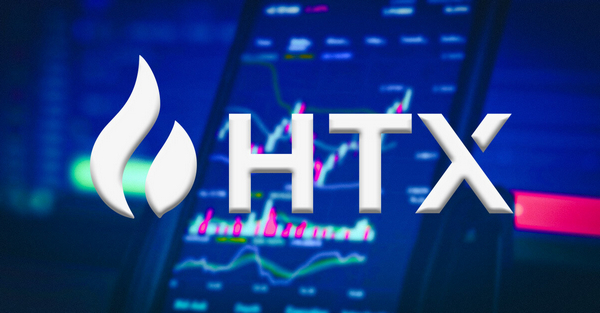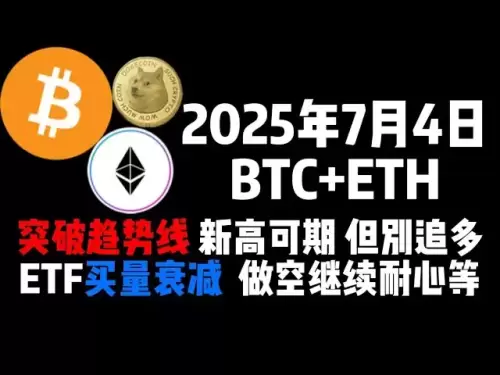-
 Bitcoin
Bitcoin $108,882.1253
-0.18% -
 Ethereum
Ethereum $2,552.5669
-0.81% -
 Tether USDt
Tether USDt $1.0005
0.02% -
 XRP
XRP $2.2403
-2.26% -
 BNB
BNB $660.0215
-0.23% -
 Solana
Solana $150.5827
-1.94% -
 USDC
USDC $1.0000
0.00% -
 TRON
TRON $0.2862
0.88% -
 Dogecoin
Dogecoin $0.1671
-3.38% -
 Cardano
Cardano $0.5826
-3.24% -
 Hyperliquid
Hyperliquid $38.7689
-4.13% -
 Sui
Sui $2.9267
-2.73% -
 Bitcoin Cash
Bitcoin Cash $482.1140
-4.17% -
 Chainlink
Chainlink $13.3784
-3.15% -
 UNUS SED LEO
UNUS SED LEO $9.0410
0.30% -
 Avalanche
Avalanche $18.1461
-3.09% -
 Stellar
Stellar $0.2404
-2.24% -
 Toncoin
Toncoin $2.8244
-2.01% -
 Shiba Inu
Shiba Inu $0.0...01161
-2.32% -
 Litecoin
Litecoin $88.1091
-3.05% -
 Hedera
Hedera $0.1558
-2.72% -
 Monero
Monero $318.0662
-2.09% -
 Polkadot
Polkadot $3.4399
-3.95% -
 Dai
Dai $1.0000
-0.01% -
 Ethena USDe
Ethena USDe $1.0002
0.00% -
 Bitget Token
Bitget Token $4.4678
-2.42% -
 Uniswap
Uniswap $7.3474
-4.23% -
 Pepe
Pepe $0.0...09803
-5.95% -
 Aave
Aave $269.1728
-3.44% -
 Pi
Pi $0.4848
-2.71%
How to open a contract account on Huobi
To open a contract account on Huobi, traders must first create a standard account, verify their identity, deposit funds, and choose between USDT- or coin-margined account types.
Nov 18, 2024 at 09:12 pm

How to Open a Contract Account on Huobi
Introduction
Huobi is a leading global cryptocurrency exchange that offers a wide range of trading products, including perpetual contracts. Contract trading allows traders to take positions on the future price of an asset without having to physically hold the underlying asset. This can provide traders with the opportunity to make profits from both rising and falling markets.
Step 1: Create a Huobi Account
The first step to opening a contract account on Huobi is to create a Huobi account. To do this, visit the Huobi website and click on the "Create Account" button. You will then need to provide your email address, create a password, and agree to the Huobi terms of service.
Step 2: Verify Your Identity
Once you have created your Huobi account, you will need to verify your identity. This is required in order to comply with anti-money laundering and know-your-customer (KYC) regulations. To verify your identity, you will need to provide your full name, date of birth, and country of residence. You will also need to upload a copy of your government-issued ID.
Step 3: Deposit Funds
Once your identity has been verified, you will need to deposit funds into your Huobi account. You can do this by using one of the supported deposit methods, such as bank transfer, credit card, or cryptocurrency.
Step 4: Open a Contract Account
Once you have deposited funds into your Huobi account, you can open a contract account. To do this, click on the "Contracts" tab on the Huobi website and then click on the "Open a Contract Account" button. You will then need to select the type of contract account you want to open. Huobi offers two types of contract accounts:
- USDT-margined contract accounts: These accounts are funded with USDT, and you can trade contracts with up to 100x leverage.
- Coin-margined contract accounts: These accounts are funded with a specific cryptocurrency, such as Bitcoin or Ethereum, and you can trade contracts with up to 20x leverage.
Step 5: Start Trading
Once you have opened a contract account, you can start trading. To do this, find the contract you want to trade and click on the "Trade" button. You will then need to select the type of order you want to place and the amount of the order.
Tips for Contract Trading
Here are a few tips for contract trading:
- Understand the risks: Contract trading is a risky business, and you can lose money if you are not careful. Make sure you understand the risks involved before you start trading.
- Use leverage carefully: Leverage can amplify your profits, but it can also amplify your losses. Use leverage carefully and only trade with an amount of leverage that you are comfortable with.
- Set stop-loss orders: Stop-loss orders can help you protect your profits and limit your losses. A stop-loss order is an order to sell a contract if the price falls below a certain level.
- Take profits: Don't be afraid to take profits when you are trading. If you have a winning trade, take profits when you are in the green.
Conclusion
Contract trading can be a great way to profit from the cryptocurrency market, but it is also important to remember that it is a risky business. Make sure you understand the risks involved and trade responsibly.
Disclaimer:info@kdj.com
The information provided is not trading advice. kdj.com does not assume any responsibility for any investments made based on the information provided in this article. Cryptocurrencies are highly volatile and it is highly recommended that you invest with caution after thorough research!
If you believe that the content used on this website infringes your copyright, please contact us immediately (info@kdj.com) and we will delete it promptly.
- Bitcoin's Pattern Break: Are HODLers the Key to the Next Surge?
- 2025-07-04 18:50:12
- Bitcoin Price, Trump's Bill, and the $150K Dream: A NYC Take
- 2025-07-04 19:50:12
- Ethereum, LILPEPE, and the July Bounce: Will Pepe Steal ETH's Thunder?
- 2025-07-04 19:10:12
- Binance Institutional Loans: Unlocking 4x Leverage and Zero Interest for Whales
- 2025-07-04 19:15:12
- Bitcoin Bull Run: Analysts Eye Peak in Late 2025?
- 2025-07-04 19:20:13
- Pepe Indicators, Bullish Forecast: Can the Meme Coin Rally?
- 2025-07-04 19:25:12
Related knowledge

How to identify the contract value range in combination with the market profile?
Jul 02,2025 at 10:56pm
Understanding the Market ProfileTo effectively identify the contract value range in combination with the market profile, it's essential to first understand what each concept entails. The market profile is a framework that helps traders visualize how price and time interact across a given period, typically a trading day or session. It provides insights i...

How to use the price slope to filter the false breakthrough signal of the contract?
Jun 20,2025 at 06:56pm
Understanding the Concept of Price Slope in Contract TradingIn contract trading, especially within cryptocurrency derivatives markets, price slope refers to the rate at which the price changes over a specific time period. It helps traders assess the strength and sustainability of a trend. A steep slope may indicate strong momentum, while a shallow slope...

How to determine the expected volatility of the contract through the volatility cone?
Jun 19,2025 at 12:28pm
Understanding the Basics of Volatility in Cryptocurrency ContractsIn the realm of cryptocurrency trading, volatility is a key metric that traders use to assess potential risk and reward. When dealing with futures contracts, understanding how volatile an asset might become over time is crucial for position sizing, risk management, and strategy developmen...

How to formulate a contract intraday trading plan in combination with the pivot point system?
Jun 21,2025 at 03:42pm
Understanding the Basics of Pivot Points in Cryptocurrency TradingPivot points are technical analysis tools used by traders to identify potential support and resistance levels. These levels are calculated using the previous day's high, low, and closing prices. In the context of cryptocurrency trading, where markets operate 24/7, pivot points help trader...

How to adjust the contract position ratio through the price fluctuation entropy?
Jun 22,2025 at 11:42am
Understanding Price Fluctuation Entropy in Cryptocurrency ContractsIn the world of cryptocurrency futures trading, price fluctuation entropy is a relatively new concept used to measure market volatility and uncertainty. It derives from information theory, where entropy refers to the degree of randomness or unpredictability in a system. In crypto contrac...

How to use the volume swing indicator to predict the contract volume-price divergence?
Jun 18,2025 at 11:42pm
Understanding the Volume Swing IndicatorThe volume swing indicator is a technical analysis tool used primarily in cryptocurrency trading to evaluate changes in volume over time. Unlike price-based indicators, this metric focuses solely on trading volume, which can provide early signals about potential market reversals or continuations. The key idea behi...

How to identify the contract value range in combination with the market profile?
Jul 02,2025 at 10:56pm
Understanding the Market ProfileTo effectively identify the contract value range in combination with the market profile, it's essential to first understand what each concept entails. The market profile is a framework that helps traders visualize how price and time interact across a given period, typically a trading day or session. It provides insights i...

How to use the price slope to filter the false breakthrough signal of the contract?
Jun 20,2025 at 06:56pm
Understanding the Concept of Price Slope in Contract TradingIn contract trading, especially within cryptocurrency derivatives markets, price slope refers to the rate at which the price changes over a specific time period. It helps traders assess the strength and sustainability of a trend. A steep slope may indicate strong momentum, while a shallow slope...

How to determine the expected volatility of the contract through the volatility cone?
Jun 19,2025 at 12:28pm
Understanding the Basics of Volatility in Cryptocurrency ContractsIn the realm of cryptocurrency trading, volatility is a key metric that traders use to assess potential risk and reward. When dealing with futures contracts, understanding how volatile an asset might become over time is crucial for position sizing, risk management, and strategy developmen...

How to formulate a contract intraday trading plan in combination with the pivot point system?
Jun 21,2025 at 03:42pm
Understanding the Basics of Pivot Points in Cryptocurrency TradingPivot points are technical analysis tools used by traders to identify potential support and resistance levels. These levels are calculated using the previous day's high, low, and closing prices. In the context of cryptocurrency trading, where markets operate 24/7, pivot points help trader...

How to adjust the contract position ratio through the price fluctuation entropy?
Jun 22,2025 at 11:42am
Understanding Price Fluctuation Entropy in Cryptocurrency ContractsIn the world of cryptocurrency futures trading, price fluctuation entropy is a relatively new concept used to measure market volatility and uncertainty. It derives from information theory, where entropy refers to the degree of randomness or unpredictability in a system. In crypto contrac...

How to use the volume swing indicator to predict the contract volume-price divergence?
Jun 18,2025 at 11:42pm
Understanding the Volume Swing IndicatorThe volume swing indicator is a technical analysis tool used primarily in cryptocurrency trading to evaluate changes in volume over time. Unlike price-based indicators, this metric focuses solely on trading volume, which can provide early signals about potential market reversals or continuations. The key idea behi...
See all articles

























































































